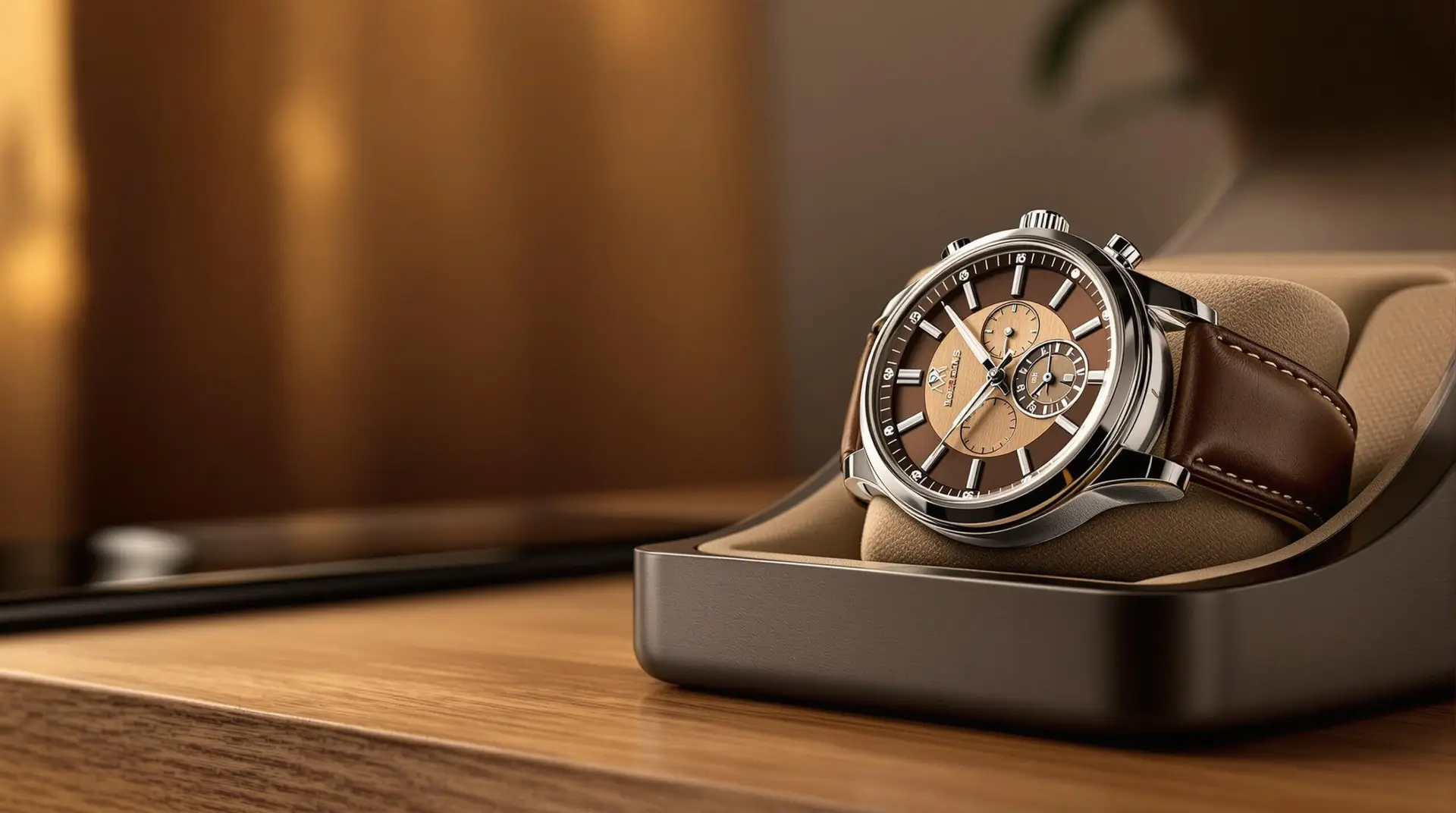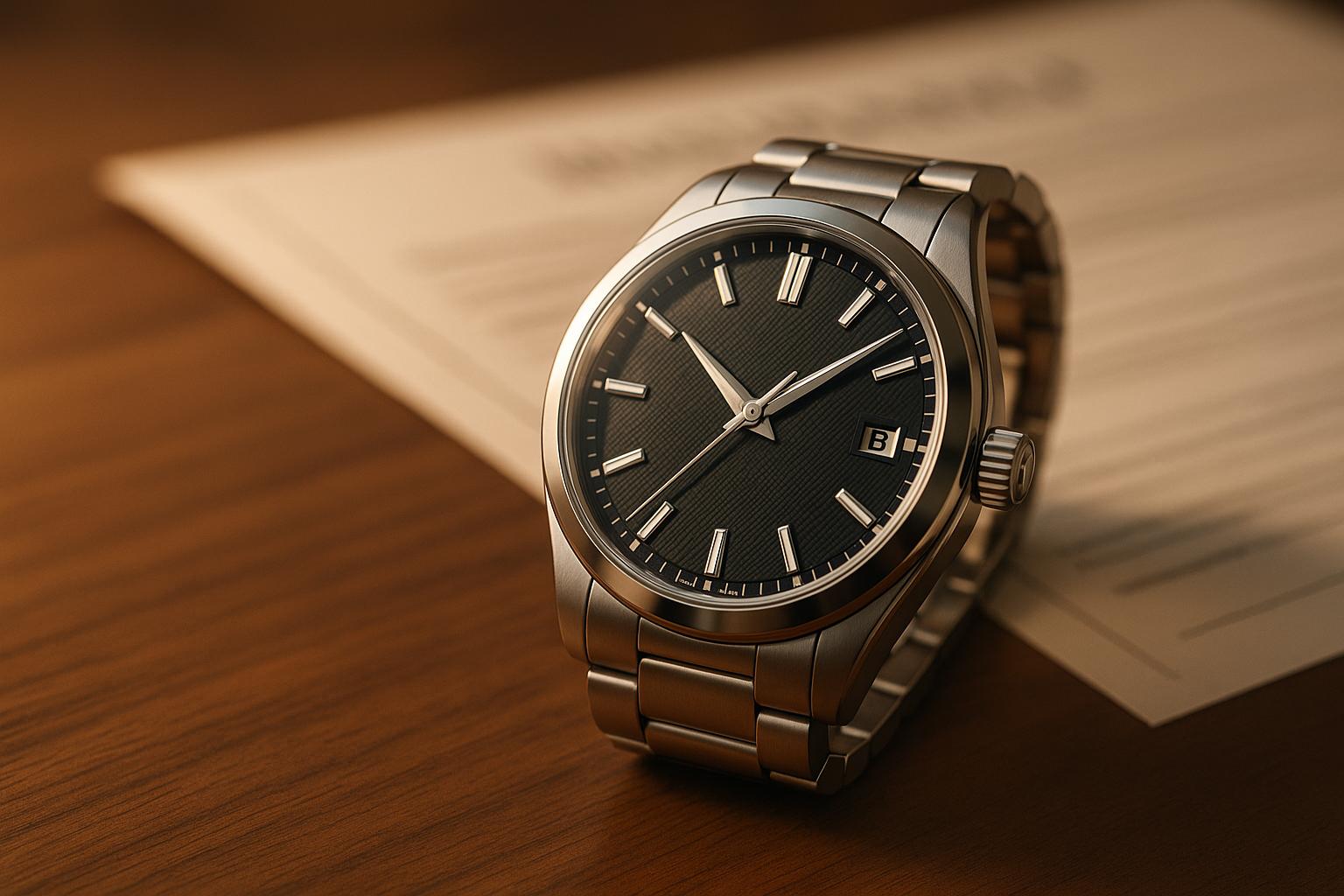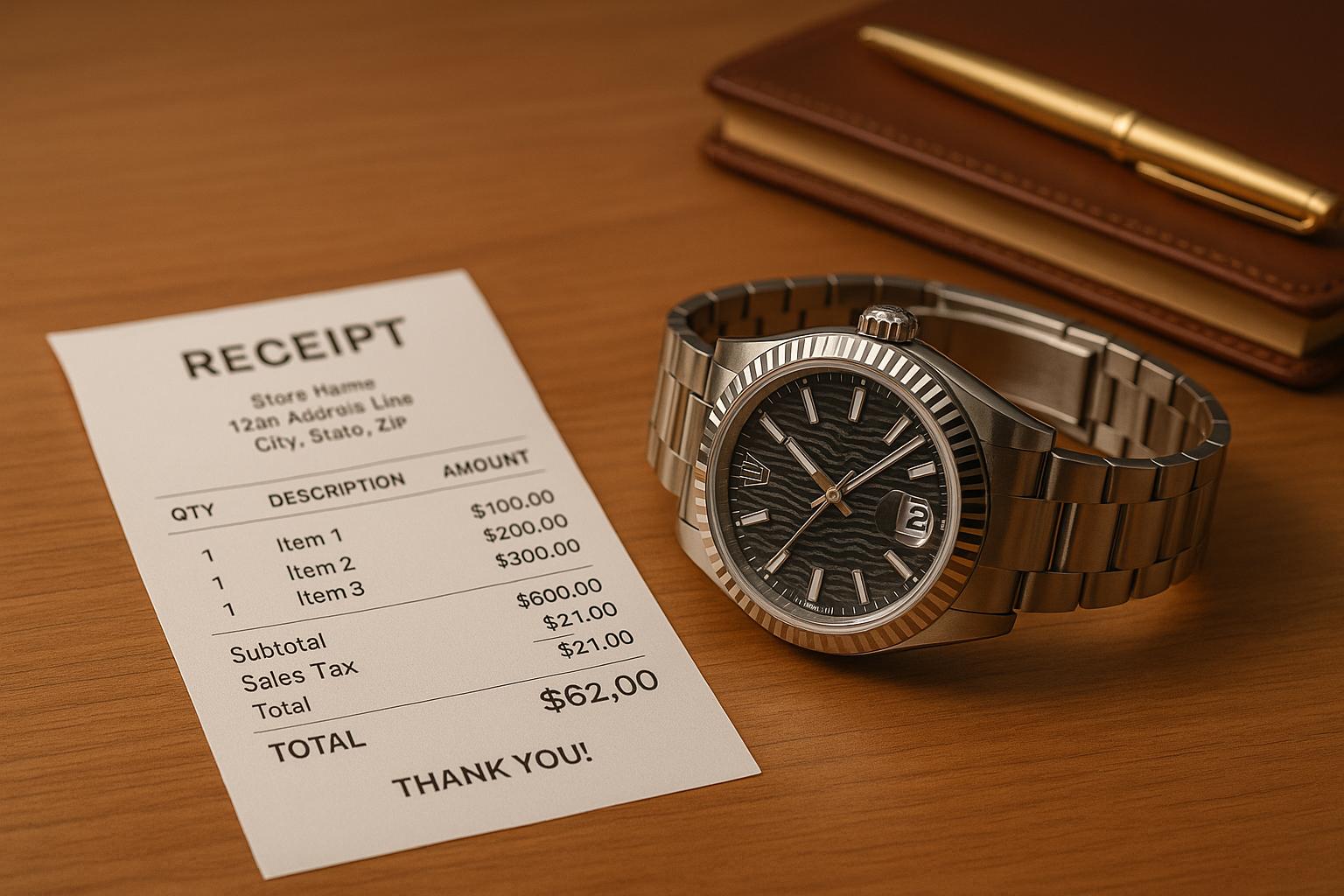Watch winders, when used correctly, do not damage automatic watches. In fact, they can help maintain a watch’s accuracy, keep lubricants evenly distributed, and simplify managing multiple timepieces. However, improper use or low-quality winders can lead to wear and tear, over-winding, or magnetic interference. Here’s what you need to know:
-
Benefits:
- Keeps watches running, avoiding the need to reset complex features.
- Prevents lubricants from drying out during long periods of non-use.
- Convenient for managing multiple watches.
-
Risks:
- Overuse can strain older watches and reduce lifespan.
- Cheap models may cause magnetic interference or inconsistent operation.
- Incorrect settings (e.g., TPD, rotation direction) can harm the movement.
-
Best Practices:
- Choose high-quality winders with adjustable settings.
- Match the winder’s specs (TPD, rotation direction) to your watch.
- Alternate between wearing your watch and using the winder to mimic natural wear patterns.
Quick Tip: Always follow your watch manufacturer’s recommendations and schedule regular maintenance (every 3-5 years) to keep your timepiece in top condition.
For more details on safe usage and professional advice, read on.
Watch Winders: Everything You Need To Know
Why Use Watch Winders
Watch winders play an important role for owners of automatic watches. They help maintain functionality, simplify management, and support the mechanical health of your timepiece.
Time and Date Accuracy
A watch winder keeps your automatic watch running, so you don’t have to reset intricate features like perpetual calendars or moon phases. These adjustments can be tricky or even require professional help [2]. For watches with complex mechanisms, uninterrupted operation is especially useful, as realigning them can be a delicate process [6].
Managing Multiple Watches
If you own several automatic watches, a winder can save you time and effort by keeping all your watches ready to wear [2]. For vintage watch enthusiasts, programmable winders are particularly helpful, as they allow for precise winding patterns that protect delicate mechanisms and prolong the life of your collection [3].
Supporting Movement Lubrication
The gentle motion of a watch winder helps distribute lubricating oils evenly inside the watch. This prevents dry spots, maintains proper oil consistency, and reduces the risk of parts sticking or failing [2]. Leaving a watch stationary for too long can lead to poor lubrication, which may affect accuracy and cause mechanical problems [3].
While these devices offer clear benefits, using the wrong winder or improper settings can harm your watch. We’ll discuss these potential risks in the next section.
Potential Risks of Watch Winders
Watch winders can be helpful, but using them incorrectly or opting for low-quality models can harm your watch.
Wear and Tear Concerns
Constant winding from watch winders can strain automatic watches, particularly older ones, as they aren’t built for nonstop motion. This prolonged activity can lead to faster wear on internal parts. Unlike the natural, occasional winding that happens when wearing a watch, winders may expose the mechanism to extended stress, potentially reducing its lifespan [2][4].
Choosing the Right Winder
Selecting the right watch winder is key to keeping your watch safe. If the winder isn’t suited to your watch, problems can arise. Here’s a breakdown of what to consider:
| Factor | Potential Problem | What to Look For |
|---|---|---|
| Rotation Pattern | Uneven stress on parts | Opt for winders with gyroscopic motion |
| Power Reserve | Risk of over-winding | Models with automatic shut-off features |
| Build Quality | Inconsistent operation | High-quality, precision-engineered winders |
| Compatibility | Mismatch with watch | Ensure specs match your watch’s needs |
Risks from Magnetic Fields
An often-overlooked issue is magnetic interference from cheap watch winders [4]. Automatic watches are sensitive to magnetic fields, which can disrupt timing, magnetize components, and cause lasting accuracy problems.
To avoid this, choose winders designed with non-magnetic materials and proper shielding. High-end models typically include these safeguards, protecting your watch from magnetic exposure and keeping it running smoothly [3][4].
sbb-itb-fcc00bb
Safe Watch Winder Usage
Matching Winders to Watches
It’s important to match your watch winder’s TPD (turns per day) and rotation direction to the specific requirements of your watch. This prevents unnecessary strain on the movement and ensures smooth operation. Automatic watches have unique specifications, so selecting a winder with accurate rotation tracking is key to maintaining your watch’s performance and longevity [3].
Correct Winder Settings
Before placing your watch in the winder, give it 20-30 manual winds to get it started. Begin with the lowest TPD setting and use a bi-directional rotation mode. Let the winder run for about 48 hours while monitoring your watch’s accuracy. If adjustments are needed, fine-tune the TPD settings to align with your watch’s needs [2][3].
Balancing Winder Use and Manual Wear
To mimic natural wear patterns, opt for winders with programmable rest periods. Alternate between wearing your watch and using the winder, allowing it to rest for 12-24 hours before winding again. Winders are best used when your watch will be unworn for extended periods. Regularly check the settings to ensure they maintain the watch’s accuracy. While modern winders are designed to prevent overwinding, balancing winder use with wearing your watch naturally helps extend its lifespan [3][4].
For the best results in maintaining your timepiece, consider consulting a professional for tailored advice.
Professional Watch Care Advice
Watchmaker Perspectives
Professional watchmakers agree that high-quality winders can help maintain automatic watches, but misuse might lead to damage. Recent data highlights this, with only 1.4% of watch owners reporting issues when they follow proper usage guidelines [2]. This shows how crucial it is to not only understand expert advice but also stick to the guidelines provided by your watch’s manufacturer.
Watch Brand Requirements
Many top watch brands outline specific instructions for using winders with their timepieces. For example, Rolex advises using winders designed specifically for their watches to ensure proper compatibility and avoid movement damage [3]. When choosing a winder, pay attention to these essential manufacturer specifications:
| Brand Requirement | Purpose/Impact |
|---|---|
| Model-Specific TPD | Ensures correct winding cycles and avoids overwinding. |
| Rotation Direction | Aligns with movement design for efficient power reserve. |
| Rest Period Settings | Imitates natural wear patterns, reducing mechanical strain. |
Maintenance Schedule Tips
Even with a winder, automatic watches need professional servicing every 3 to 5 years [2][4]. If you notice issues like inconsistent timekeeping or a reduced power reserve, have your watch inspected by a professional. By pairing proper winder use with regular maintenance, you can keep your watch running smoothly for years to come.
Conclusion
Key Takeaways
When used correctly, watch winders don’t harm automatic watches. In fact, high-quality winders with proper settings can help maintain a watch’s accuracy and performance. Research shows that only 1.4% of watch owners encounter issues when they stick to manufacturer recommendations [2].
The safety and effectiveness of a watch winder depend on three main factors:
| Factor | Impact | Best Practice |
|---|---|---|
| Winder Quality | Impacts motor durability and precision | Choose reputable brands, starting around $400 |
| TPD Settings | Affects winding efficiency | Align settings with manufacturer specs (e.g., 650 TPD for Rolex) |
| Usage Pattern | Reduces mechanical wear | Alternate between winder use and manual wear |
By keeping these factors in mind, you can ensure your watch winder works safely and effectively.
Tips for Watch Owners
"A quality watch winder operating at the proper setting is one of the best ways to maintain a watch’s accuracy for a long time" [1].
- Invest in Quality: Look into trusted brands like SwissKubik Startbox ($540) and Wolf Cub ($349) [3].
-
Set It Up Right: Configure your winder to match your watch’s specific requirements. Watch expert Sacha Sarkissian explains,
"Collectors of high quality watches use a watch winder as a tool to protect [their watch], and exercise it while in storage" [2].
- Monitor Performance: Check your watch’s accuracy every 48 hours when first using a winder. Make adjustments if needed, and stick to the recommended service schedule of 3-5 years [4].
FAQs
Is it recommended to use a watch winder?
Using a watch winder isn’t necessary for all automatic watches, but it can be handy in certain situations. Here’s when it might be worth considering:
| Scenario | Benefit | Consideration |
|---|---|---|
| Owning Multiple Watches | Keeps all watches ready to wear | Best for occasional use |
| Watches with Complex Features | Maintains settings like perpetual calendars | Ideal for intricate mechanisms |
| Long-Term Storage | Prevents lubricants from drying out | Useful for extended downtime |
Experts emphasize that whether to use a watch winder depends on your personal needs. High-quality winders with proper settings are crucial to ensure they don’t harm your timepieces [4].
"Watch winders are particularly useful for managing multiple watches, ensuring that each watch remains wound and accurate, even when not being worn regularly" [5].
If you’re considering getting one, choose a trusted brand with adjustable settings suited to your specific watch [3]. Ultimately, the decision comes down to your collection size and habits, but consulting a professional can help you make the right choice.


